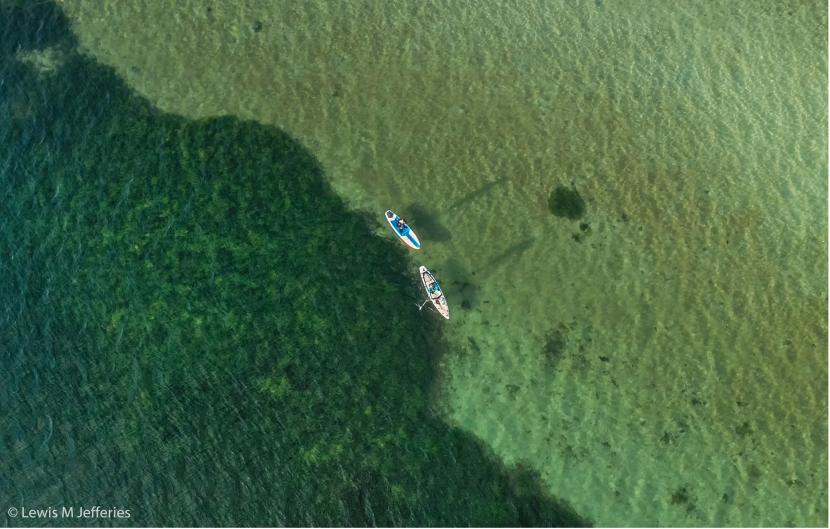Seagrass: A Key To Coastal Restoration In Scotland

Table of Contents
The Ecological Importance of Seagrass in Scotland
Seagrass meadows are incredibly valuable ecosystems, rightfully dubbed the "lungs of the ocean." Their ecological importance to Scotland's marine environment is multifaceted, contributing significantly to biodiversity, carbon sequestration, and coastal protection. Effective seagrass restoration in Scotland is key to unlocking these benefits.
Seagrass Ecosystem Services: Carbon Sequestration
Seagrass meadows act as a significant carbon sink, absorbing CO2 from the atmosphere far more effectively than many terrestrial forests. Studies estimate that seagrass can sequester carbon at rates up to 35 times faster than tropical rainforests. This carbon is then stored within the sediment, helping to mitigate climate change. Protecting and restoring Scottish seagrass meadows is therefore crucial for enhancing Scotland's carbon capture capacity and contributing to global climate action.
Seagrass Ecosystem Services: Biodiversity Support
Seagrass provides vital habitat for a wide array of species, supporting a rich and complex food web. These underwater meadows serve as nurseries for commercially important fish species like cod and plaice, while also providing refuge for invertebrates like crabs, shrimp, and seahorses. Numerous bird species also rely on seagrass meadows for foraging. In Scotland, species such as the common eider and various wading birds depend on the ecosystem services provided by these vital habitats. The biodiversity supported by seagrass underscores its importance within the broader Scottish marine ecosystem.
Seagrass Ecosystem Services: Coastal Protection
Dense seagrass beds act as natural buffers, dissipating wave energy and reducing erosion. This natural coastal protection is particularly important in Scotland, where many areas are vulnerable to storm damage and coastal flooding. Seagrass meadows help stabilize sediments, preventing coastal erosion and minimizing the impact of extreme weather events, safeguarding coastal communities and infrastructure. The economic benefits of this natural coastal defense are significant, reducing the need for costly artificial defenses.
Threats to Seagrass Meadows in Scotland
Despite their ecological importance, Scottish seagrass meadows face numerous threats, leading to significant decline in recent decades. Addressing these threats is essential for successful seagrass restoration in Scotland.
Pollution Impacts on Seagrass
Pollution from various sources significantly impacts seagrass health. Agricultural runoff containing fertilizers and pesticides can cause eutrophication, leading to algal blooms that smother seagrass. Sewage discharge introduces pathogens and excess nutrients, while industrial pollutants can directly poison seagrass and the organisms that depend on it. Improving water quality through stricter regulations and sustainable agricultural practices is paramount for seagrass conservation.
Physical Damage to Seagrass Habitats
Physical damage from human activities also poses a major threat. Boat anchors can tear up seagrass beds, while dredging for navigation or construction can destroy vast areas of habitat. Coastal development, including the construction of marinas and other infrastructure, further contributes to habitat loss. Careful planning and management of coastal activities are crucial to minimize physical damage to seagrass meadows.
Climate Change and Seagrass Decline
Climate change exacerbates the threats to seagrass. Rising sea temperatures can cause bleaching and mortality, while ocean acidification reduces the ability of seagrass to calcify and grow. Increased storm intensity leads to greater physical damage to seagrass beds. Mitigating climate change and adapting to its impacts are crucial for long-term seagrass conservation.
Seagrass Restoration Initiatives in Scotland
Recognizing the importance of seagrass and the threats it faces, various initiatives are underway in Scotland to restore these vital ecosystems. These projects highlight the growing commitment to seagrass restoration in Scotland.
Community-Led Seagrass Restoration
Community involvement is vital for successful seagrass restoration. Numerous citizen science projects engage volunteers in seagrass planting, monitoring, and data collection. These initiatives not only contribute directly to restoration efforts but also raise public awareness and foster a sense of stewardship for the marine environment. Engaging local communities fosters long-term sustainability in seagrass conservation efforts.
Government Policies and Funding for Seagrass
The Scottish Government has increasingly recognized the importance of seagrass conservation and restoration. Funding is allocated to various research and restoration projects, and policies are being developed to protect seagrass habitats from further degradation. Increased government support for seagrass restoration is vital for scaling up effective restoration initiatives across Scotland's coastlines.
Scientific Research and Monitoring of Seagrass
Ongoing scientific research plays a critical role in informing seagrass restoration efforts. Scientists are investigating optimal planting techniques, monitoring the effectiveness of restoration projects, and developing innovative approaches to enhance seagrass resilience. Research institutions and universities across Scotland are actively involved in these efforts, providing crucial data and expertise for successful seagrass conservation.
Conclusion
Seagrass meadows are integral to the health of Scotland's coastal ecosystems, offering invaluable ecosystem services, including carbon sequestration, biodiversity support, and coastal protection. However, these vital habitats are under threat from pollution, physical damage, and climate change. Successful seagrass restoration in Scotland requires a multi-pronged approach involving community engagement, government support, and ongoing scientific research. By working together, we can protect and restore these crucial underwater meadows, ensuring the health and resilience of Scotland's coastlines for generations to come. Support seagrass restoration in Scotland; get involved in seagrass conservation and learn more about the importance of seagrass meadows in Scotland. Numerous organizations offer volunteer opportunities and further information on seagrass conservation initiatives. Let's work together to protect these vital ecosystems!

Featured Posts
-
 Netanyahu Accuse Macron De Grave Erreur Sur L Etat Palestinien
May 04, 2025
Netanyahu Accuse Macron De Grave Erreur Sur L Etat Palestinien
May 04, 2025 -
 Bianca Censori And Kanye West A Difficult Divorce
May 04, 2025
Bianca Censori And Kanye West A Difficult Divorce
May 04, 2025 -
 How To Get Fox Channels Without Cable A Comprehensive Guide
May 04, 2025
How To Get Fox Channels Without Cable A Comprehensive Guide
May 04, 2025 -
 Can Tynnas Voice Carry Germany To Eurovision Success
May 04, 2025
Can Tynnas Voice Carry Germany To Eurovision Success
May 04, 2025 -
 2025 Kentucky Derby Horse Profile Is Chunk Of Gold A Winner
May 04, 2025
2025 Kentucky Derby Horse Profile Is Chunk Of Gold A Winner
May 04, 2025
